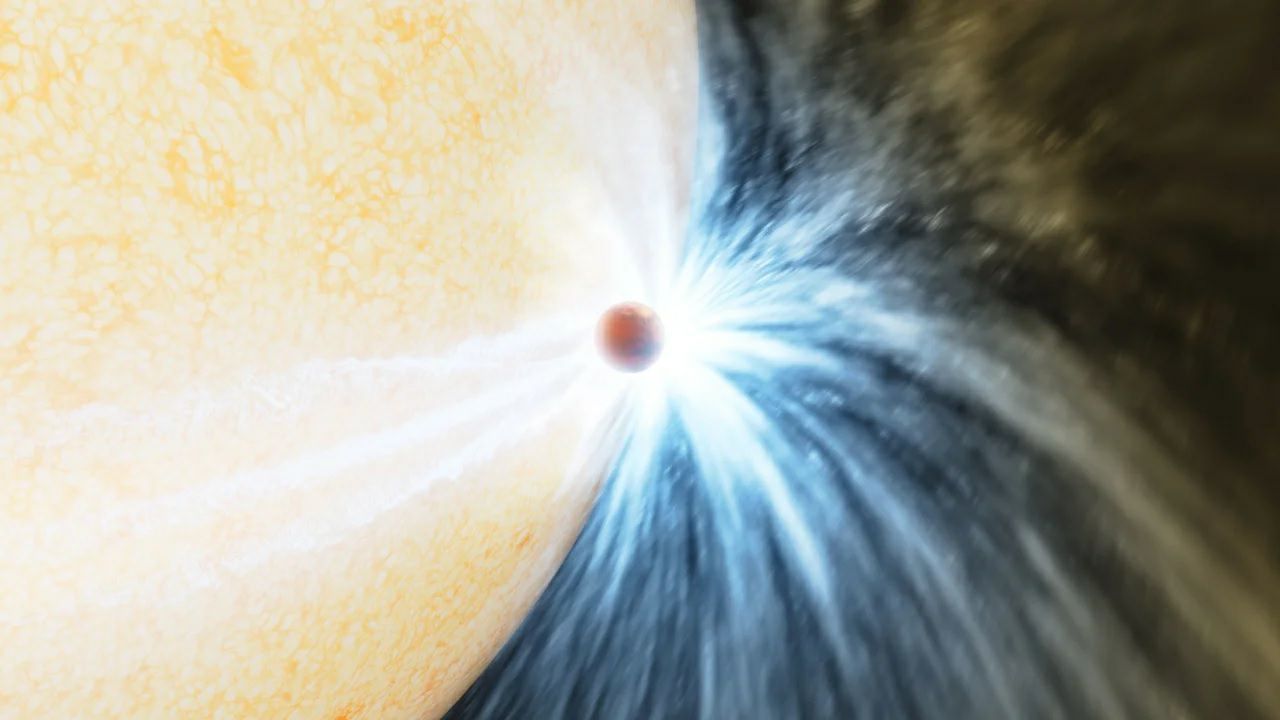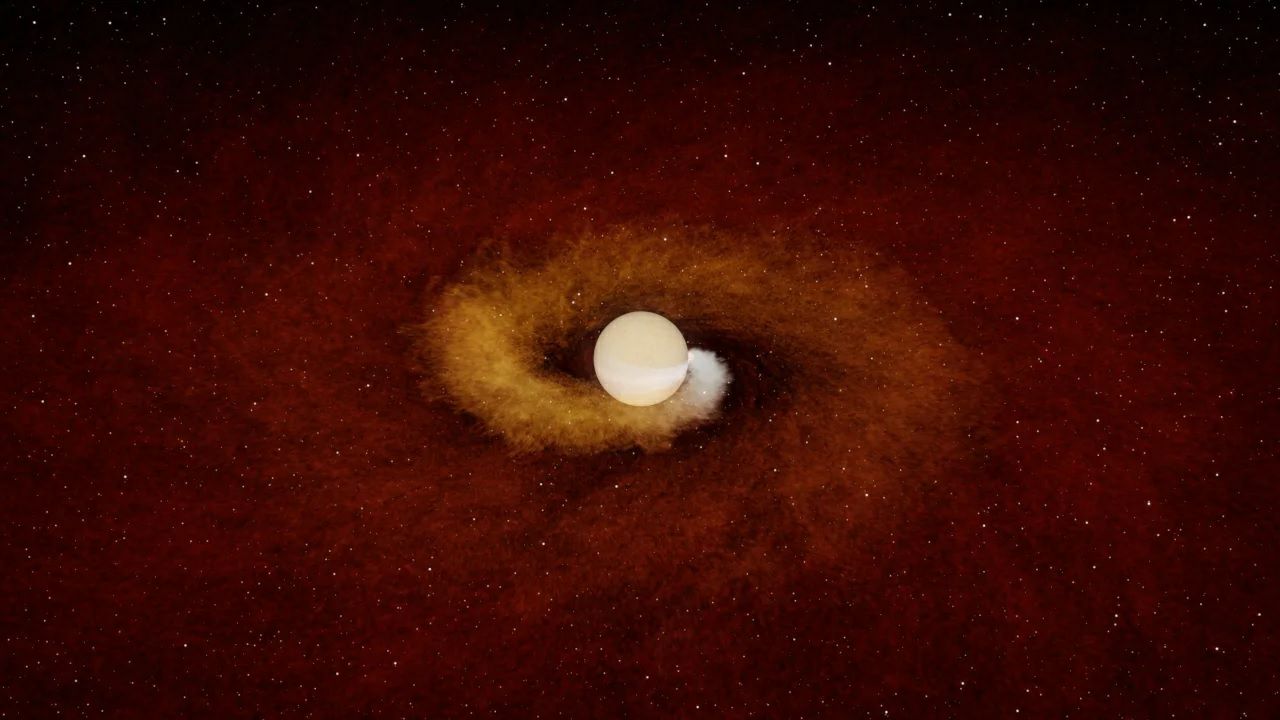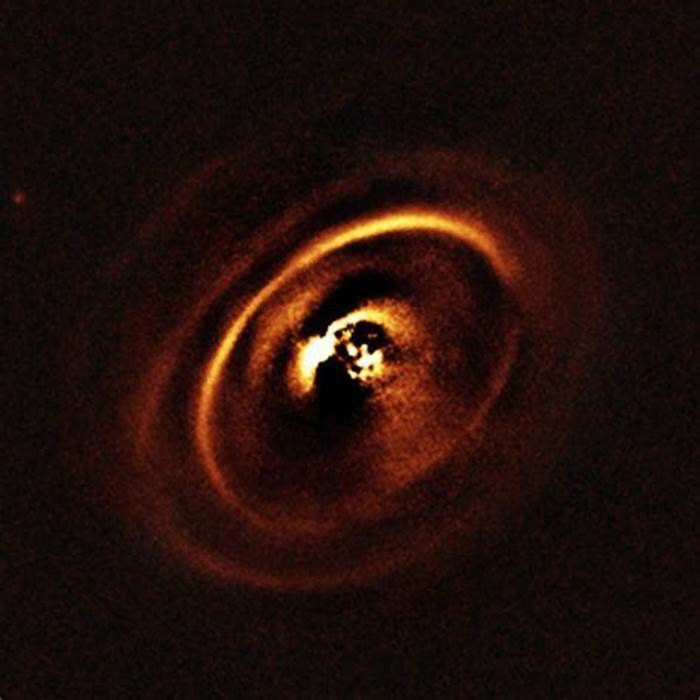“Star Devours Planet: A Fate Earth Will Eventually Face”
However, astronomers say that when the Sun engulfs the Earth, it will only cause a “small disturbance” compared to the explosion in the universe they have just observed.
A Terrifying Discovery
Most planets are thought to end when their host star runs out of energy. At that point, the star in the solar system will turn into a red giant and continue to expand, engulfing anything unlucky in its path.
Astronomers have previously seen the effects before and after this process, but have never caught a planet in the act of being swallowed up.
Kishalay De, a postdoctoral researcher at the Massachusetts Institute of Technology and lead author of the new study, said the discovery happened by chance like a “detective story.”
He said he stumbled upon a star that suddenly brightened more than 100 times over a 10-day period in a study conducted three years ago. The star is located in our very own Milky Way galaxy, about 12,000 light-years away from Earth, near the constellation Aquila.
De usually searches for binary star systems, in which the larger star tends to swallow up its companion. But the data showed that this explosion was surrounded by cold gas, indicating that it was not a binary star system.
NASA’s NEOWISE infrared space telescope also showed dust beginning to be ejected from the region several months before the explosion occurred. This explosion generated energy that was about 1,000 times less than the previously observed mergers between stars.
“So you ask yourself: What’s smaller than 1,000 times the mass of a star?” De asked and answered. “It’s like a Jupiter-sized planet.”
The research team from MIT, Harvard University, and the California Institute of Technology also determined that the swallowed planet was a giant gas planet with a mass similar to that of Jupiter, but much closer to its star.
Meanwhile, the devourer, much like the Sun, “nibbled” on the planet for about 100 days, starting by nibbling at its edges, causing dust to fly out.
In the end, a burst of light occurred in the final 10 days as the planet was completely destroyed and plunged into the star.
Miguel Montarges, an astronomer at the Paris Observatory who was not involved in the study, noted that the star was thousands of degrees hotter than the planet. “It’s like putting an ice cube in a pot of boiling water,” he explains.
A similar fate for Earth?
Morgan MacLeod, a postdoctoral researcher at Harvard and co-author of a study published in the journal Nature, said that most of the thousands of exoplanets discovered outside the Solar System to date “will ultimately suffer this fate”.
However, according to MacLeod, Earth may end not with a bang, but with a whimper, as it is smaller and less energetic.
MacLeod explained that when the Sun runs out of energy and expands into a red giant star in about 5 billion years, it will create “less severe disruptions” because small rocky planets are much less affected than giant gas planets like Jupiter and Saturn.
However, it is possible that humans or a civilization dominating Earth at that time will not witness this frightening scene. Because, before being engulfed, the “blue planet” had become “uninhabitable”. For thousands of years, even longer before it dies, the Sun will evaporate all the water on the planet.
Ryan Lau, an astronomer and co-author of the study, said in a statement: “After billions of years of our Sun’s existence, its final stages may end in a last moment that lasts only a few months.”
Now, astronomers know what to look for and hope to soon observe more planets being swallowed by their stars. “In the Milky Way alone, a planet could be swallowed every year,” De added.
Hits: 0








